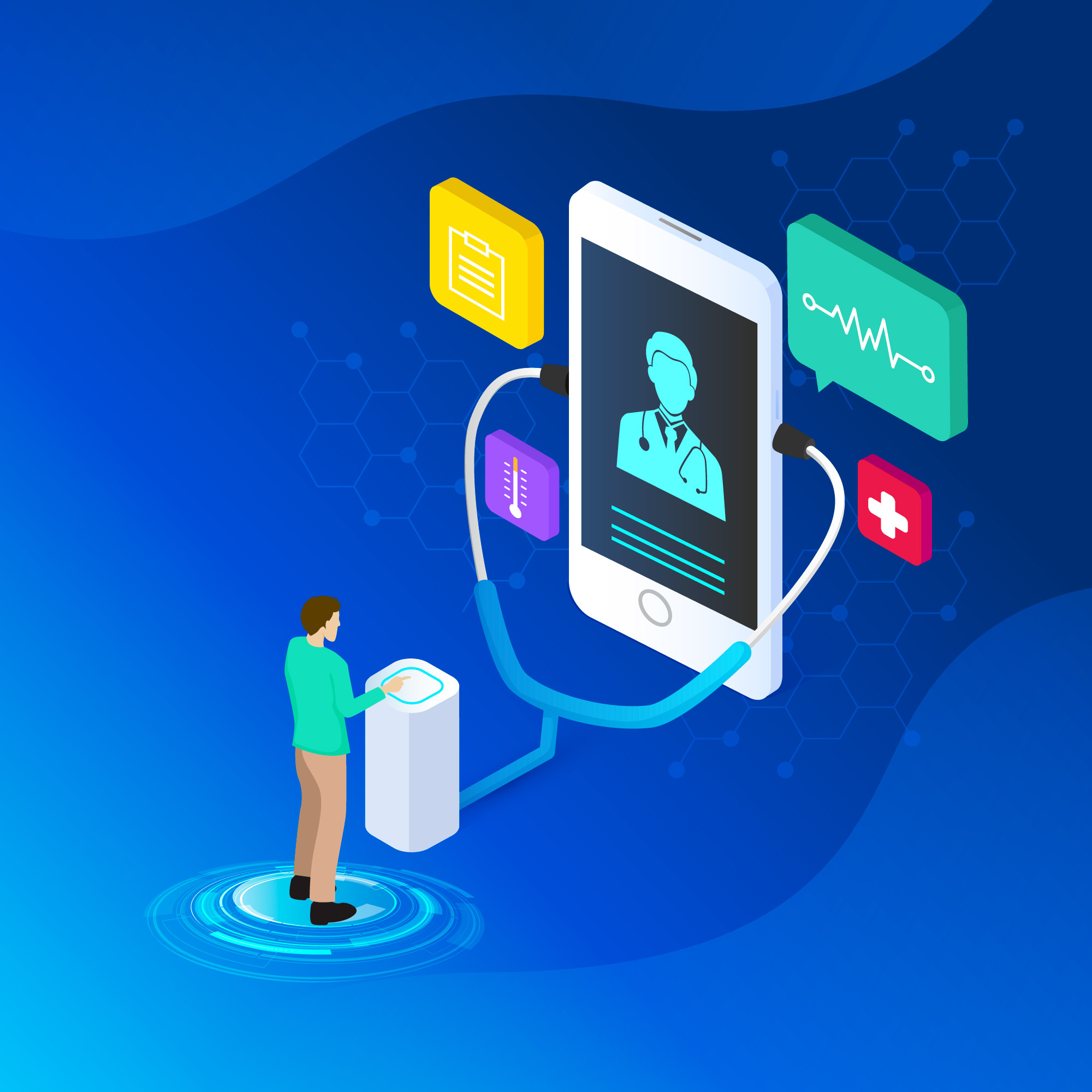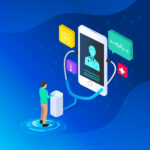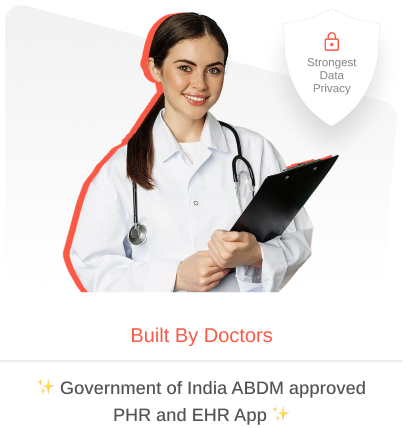The rapid digital transformation of the healthcare system has revolutionized i.e. how medical services are delivered and consumed. From online appointment scheduling to real-time access to medical histories, technology allows both providers and patients in unprecedented ways. At the heart of this evolution are patient portals and mobile health applications—tools that put important health information directly into the hands of patients.
Patient portals serve as secure digital ways where individuals can access their medical records, lab results, prescriptions and communicate with healthcare providers. Mobile health apps extend this functionality by enabling users to track vitals, set medication reminders, and monitor chronic conditions on the go. Despite their growing availability, the effective use of these tools depends largely on how well patients understand and engage with them.
That’s why education of patient portals plays a very important role. Empowering patients to navigate these platforms confidently leads to better communication, improved treatment and more informed decision-making. Moreover, it improves the overall efficiency of the electronic health record systems and ensures smooth health information management. In this guide, we’ll explore a step-by-step approach to educating patients on using digital health tools, featuring Roojh—a modern, intuitive hospital management software built to simplify patient engagement and make digital healthcare more accessible to everyone.
Why is Educating Patients Essential?
As the healthcare system increasingly adopts digital tools, one challenge occurs in how patients know how to use digital health tools. Despite the availability of patient portals and mobile health apps, many patients struggle with accessing and navigating these platforms due to barriers like limited technological literacy, fear of data misuse, language limitations, and lack of reliable internet access, especially in rural areas.
According to a 2023 survey by the Office of the National Coordinator for Health Information Technology (ONC), nearly 40% of patients reported feeling overwhelmed or confused when using online health systems for the first time. For elderly populations, this number increases significantly due to unfamiliarity with digital interfaces.
This digital divide directly affects patient engagement in turn to health outcomes. When patients lack the confidence or knowledge how to use health technologies, they miss critical updates, delay medication adherence or skip follow-ups, all can affect recovery or chronic disease management. Educating patients addresses these gaps by promoting digital literacy and enhancing overall trust in the healthcare system. It transforms passive patients into active participants in their care journey, leading to improved communication, greater transparency and better management of personal health information.
From a provider’s perspective, this also supports more efficient health information management. When patients know how to update their records, track their symptoms, or share relevant data through portals and apps, it reduces the administrative burden on clinics and ensures a more accurate and holistic view of the patient’s health history.
In practical, solutions like Roojh offer user-friendly interfaces and step-by-step guidance that make the adoption of these digital tools easier. Hospitals using Roojh have seen a measurable increase in patient satisfaction and participation, simply by investing in basic onboarding and tech education during appointments.
By closing the knowledge gap, patient education becomes the foundation of truly connected and patient centered digital care.
Step-by-Step Patient Education Framework
Step 1: Awareness and Introduction
The first step in patient education is simply making them aware that these tools exist and can make their lives easier. Most patients still rely on traditional methods like calling the clinic or visiting in person to check appointments or access test results. That’s why creating awareness through multiple channels is essential.
Hospitals and clinics using Roojh can leverage flyers at reception desks, SMS notifications post-appointment, and direct physician recommendations during consultations to introduce the benefits of patient portals and mobile health apps. This multichannel approach ensures patients are informed in a way that’s accessible to them.
Highlighting features like 24/7 access to records, reduced paperwork, and faster communication can help patients understand the immediate benefits of using Roojh. Visual branding, such as posters with QR codes leading to the app download, can boost engagement at clinics.
By positioning Roojh not just as a patient management software but as a personal health assistant, healthcare providers can build curiosity and motivate patients to take the next step.
Step 2: Easy Onboarding and Registration
Once awareness is created, the next important step is onboarding. The sign-up process should be simple, secure, and stress-free. Roojh streamlines this experience with one-click sign-ups and OTP-based logins, removing the common friction points that discourage new users. At the clinic level, front-desk staff or health navigators can guide patients through their first login. Hospitals can set up digital kiosks or assign tech-savvy staff to assist with app downloads and profile creation, ensuring no patient is left behind.
Roojh’s intuitive design is built for inclusivity, offering an interface that doesn’t require tech expertise. Clean layouts, simple menus, and easy to understand icons make navigation more easy. Smooth onboarding sets the tone for a positive digital experience and reduces drop-off rates. When patients feel confident using Roojh from the start, they’re more likely to use it regularly to manage appointments, lab results, and prescriptions which are the key components of any good patient management software.
Step 3: Hands-On Training
Training patients to use health portals effectively ensures they fully understand the app’s capabilities and can maximize its use. Roojh encourages hands-on learning through a combination of group classes and visual learning tools. Hospitals can organize small workshops in waiting areas, where trained staff demonstrate how to book appointments, check lab reports, and request medication refills using the app. Additionally, personalized sessions can be offered to patients needing extra help, such as elderly users or those with limited tech experience.
Instructional videos and printed booklets available in clinics help reinforce learning after the session. Roojh also supports touchscreen kiosks, allowing patients to interact with a demo version before committing to the full platform.
Step 4: Demonstrate Key Features
Understanding what the app can do is important. Patients are more likely to stay engaged when they see the value of the technology firsthand.
Patients should be shown how to:
- Access lab reports and view appointment history.
- Download prescriptions directly from the app.
- Schedule future visits or follow-ups.
- Upload self-monitored data such as blood pressure, glucose levels, and daily activity.
The ability to review health trends and medical histories from electronic health record systems gives patients a clearer picture of their health, which can improve medication adherence and long-term management of chronic conditions. One of Roojh’s standout features is its personalized health dashboard that allows users to track vitals, receive reminders, and share information with doctors during virtual consultations. These tools help bridge the gap between clinic visits and at-home care.
By empowering patients to take control of their care using patient management software, healthcare providers foster better compliance, reduce unnecessary visits, and ultimately improve outcomes.
Step 5: Multilingual & Inclusive Learning Materials
India’s linguistic diversity and varying literacy levels mean that digital education must be inclusive. Roojh addresses this by offering multilingual interfaces and localized support. Educational materials whether video, print, or in-app, should be available in the local language. Clinics using display posters, step-by-step guides, and infographics in Hindi, Marathi, Gujarati, Bengali, or any regional language relevant to their area.
In-app tutorials include audio instructions and icons that make learning intuitive, even for patients with low literacy. This “visual-first” approach ensures that the interface is not intimidating and encourages self-exploration. Real-life use cases of non-English speaking patients successfully navigating their health journey demonstrate the software’s accessibility. This creates an inclusive ecosystem where no one is excluded from digital healthcare.
Step 6: Privacy, Security & Trust Building
One of the biggest concerns patients have with digital health platforms is the privacy of their data. Without trust, even the best technology goes unused. Educating patients about the security protocols in place is essential. Roojh, for example, complies with both national and international health data regulations. All data shared through the app is encrypted and stored securely, and users maintain full control over their information.
Highlighting safety features such as biometric login, two-factor authentication, and the ability to manage permissions reassures users. Especially for older patients or those with chronic illnesses, building trust can make or break engagement. The goal is to make them feel safe, not just informed.
Step 7: Engaging Family and Caregivers
Many patients, especially senior citizens, children, or those with mobility issues, rely on caregivers to help manage their health. Educating both patients and caregivers ensures the system works smoothly for everyone involved.
Roojh supports role-based access, allowing family members or caregivers to manage appointments, medication reminders, and records without compromising the patient’s privacy. Clinics can offer special training sessions for caregivers, explaining how to use digital tools on behalf of patients. Shared login credentials, secure access points, and guided dashboards make navigation easy for family members.
For example, a parent can track a child’s vaccination schedule or a caregiver can monitor an elderly patient’s vitals, all in one place. This connected approach not only eases the burden on patients but also ensures better coordination of care.
Step 8: Feedback Loops & Continual Improvement
No education process is complete without feedback. After initial training, it’s important to gather insights on what worked, what didn’t, and where improvements are needed. Roojh enables clinics to collect feedback through in-app surveys, quick polls, and support tickets. These tools help identify which features patients are using and which they struggle with.
Healthcare providers can also analyze usage patterns to pinpoint drop-offs or feature confusion. Based on this data, clinics can update their training modules and even host follow-up workshops. This continuous feedback loop not only improves the education process but also strengthens the system’s overall health information management capability by encouraging consistent use and up-to-date information.
By listening and adapting, Roojh ensures that patients stay engaged, not just for a few days, but throughout their healthcare journey.
Read More: Electronic Health Record Systems (EHR): A Complete Guide
Roojh as a Case Example
Roojh is more than just a patient management software—it’s a patient-centric solution built to simplify digital healthcare. With its intuitive interface, multilingual support, one-tap access to medical records, and in-app tutorials, Roojh makes it easy for patients of all ages and backgrounds to understand and use digital health tools.
Hospitals using Roojh have reported higher engagement and satisfaction. A Pune-based multispecialty clinic shared that patient portal usage rose by 60% within the first three months of implementation, thanks to Roojh’s guided onboarding and help desk support. From appointment booking to prescription refills, Roojh ensures every step of the patient journey is seamless. Visual aids like dashboards and step-by-step pop-ups make navigation simple, even for first-time users.
Conclusion
In today’s evolving healthcare system, patient education is no longer optional—it’s essential. Teaching patients how to navigate portals and mobile health apps empowers them to take control of their care, improves health outcomes, and strengthens the overall patient-provider relationship.
As digital platforms become central to care delivery, ensuring patients understand and trust these tools is key to long-term success. When patients actively use features like appointment scheduling, report access, and prescription tracking, it reduces administrative burden, enhances care coordination, and supports more informed decision-making across the board. Solutions like Roojh, the best hospital management system, paving the way for a digitally inclusive future. By simplifying technology, offering multilingual support, and seamlessly integrating with electronic health record systems, Roojh ensures that both patients and providers benefit from smoother, more efficient healthcare delivery.
Roojh’s commitment goes beyond software—it’s about building a bridge between technology and compassionate care. As more healthcare providers adopt digital tools, Roojh remains dedicated to making healthcare truly accessible, understandable, and human-centered for everyone.








